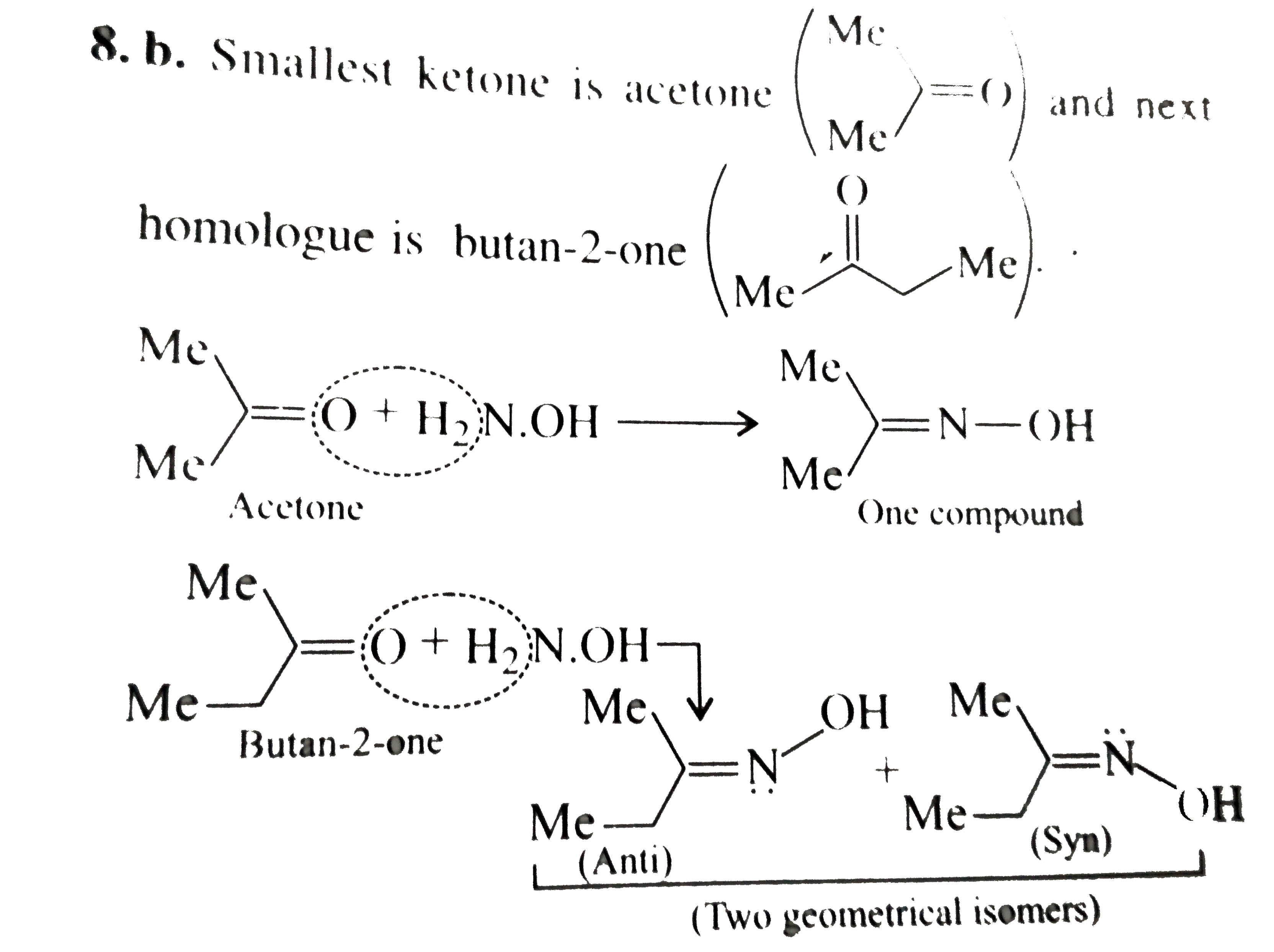The smallest ketone and its next homologue are reacted with to form oxime.
A
Two different oximes are formed.
B
Three different oximes are formed.
C
Two oximes are optically active.
D
All oximes are optically active.
Video Solution
Text Solution
The correct Answer is:B
|
Updated on:21/07/2023
Topper's Solved these Questions
- BOOK - CENGAGE CHEMISTRYCHAPTER - ALIPHATIC AND AROMATIC ALDEHYDES AND KETONESEXERCISE - Archives Fill In Theblanks2videos
ALIPHATIC AND AROMATIC ALDEHYDES AND KETONES
- BOOK - CENGAGE CHEMISTRYCHAPTER - ALIPHATIC AND AROMATIC ALDEHYDES AND KETONESEXERCISE - Archives True And False1videos
ALIPHATIC AND AROMATIC ALDEHYDES AND KETONES
- BOOK - CENGAGE CHEMISTRYCHAPTER - ALIPHATIC AND AROMATIC ALDEHYDES AND KETONESEXERCISE - Archives Objective10videos
ALIPHATIC AND AROMATIC ALDEHYDES AND KETONES
- BOOK - CENGAGE CHEMISTRYCHAPTER - ALCOHOL,PHENOL AND ETHERSEXERCISE - Archives Analytical And Descriptive15videos
ALCOHOL,PHENOL AND ETHERS
- BOOK - CENGAGE CHEMISTRYCHAPTER - AMINESEXERCISE - QUESTION BANK1videos
AMINES
Similar Questions
Knowledge Check
- Question 1 - Select One
The smallest ketone and its next homologue are reacted with H2NOH to form oxime
Aall oximers are optically activeBthree differe oximers are formedCtwo oximers are optially activeDtwo different oximers are formed - Question 2 - Select One
The smallest aldehyde and its next homologue are treated with NH2OH to form oxime. Find out the correct answer out of the following.
ATwo different oximes are formedBThree different oximes are formed.CTwo oximes are optically active.DAll oximes are optically active. - Question 3 - Select One
The smallest ketone and it's functional isomere are reated with NH2−OH to form oxime
Atwo different oxime are formedBthree different oxime are formedCtwo oximes are optically activeDall oximes are optically active


